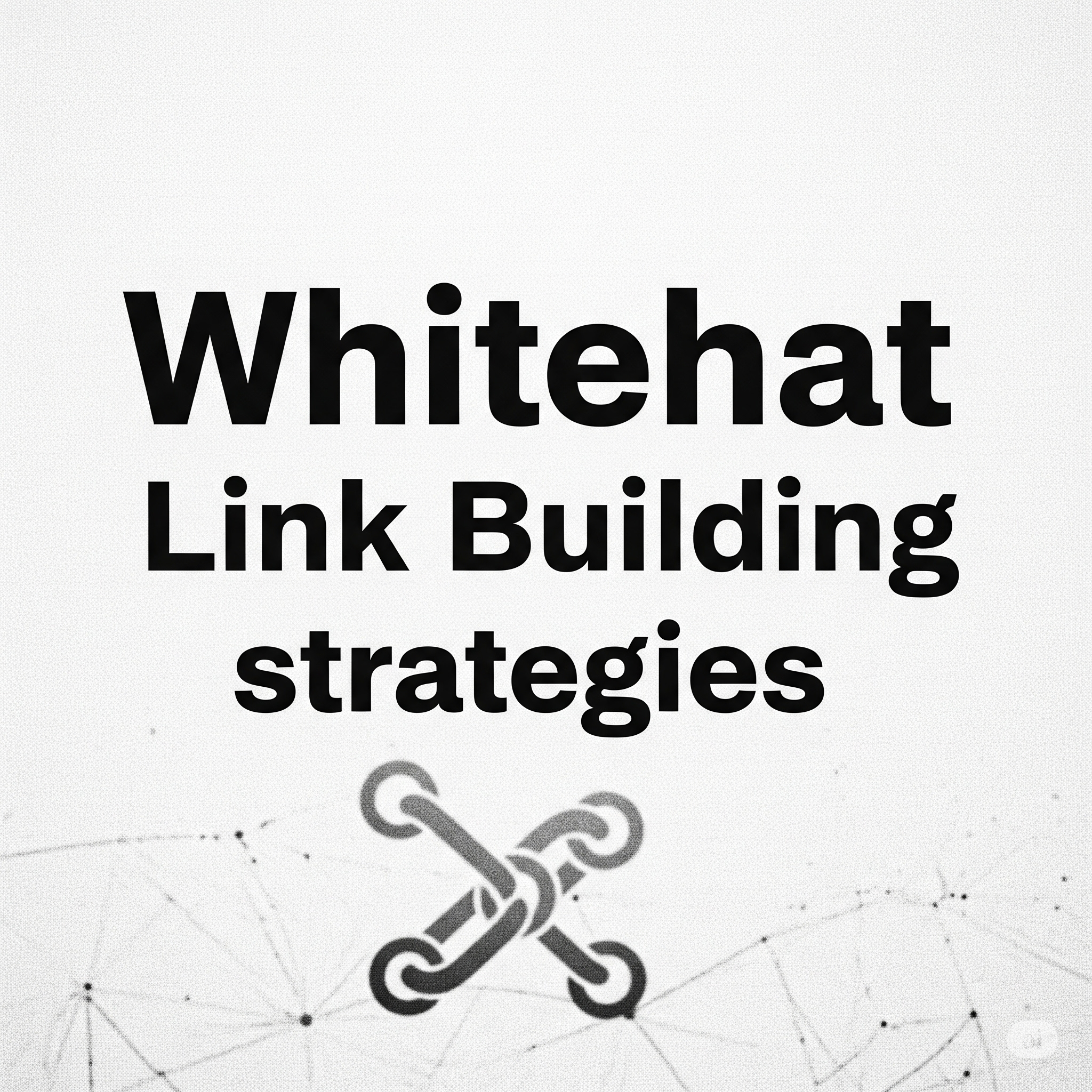Whitehat Link building has not changed yet. I’ve been in SEO long enough to see tactics rise, fall, and evolve. If you’re still using outdated methods, you’re not just behind, you’re putting your site at risk. This guide walks you through what works and still work in 2025, based on real practice, not theory.
Let’s dig into the whitehat link building strategies that bring real links, real results, and long-term growth.
1.Digital PR: The #1 Whitehat Link Building Strategy
In 2025, Digital PR has taken the crown as the most effective whitehat link building strategy, and at a1 link building, it’s our signature approach. Digital PR blends the creativity of storytelling with the precision of SEO, earning high-authority editorial links from reputable publications, news sites, and niche blogs.
Instead of chasing backlinks through cold outreach alone, we create newsworthy, data-driven, or expert-led content that journalists and editors want to cover. This could be an industry insights report, original research, an interactive tool, or a trending commentary that connects with what the media is already talking about.
The beauty of Digital PR is that it’s Google-safe, scalable, and brand-enhancing. You’re not just creating whitehat link building, you’re building brand authority, topical relevance, and trust. Every earned link carries both SEO value and public relations impact, strengthening your position in both search results and customer perception.
At a1, our Digital PR campaigns follow a simple yet powerful process:
- Market Research & Story Ideation – Find topics that blend search intent with newsworthiness.
- Content Creation – Build compelling, share-worthy assets that journalists love.
- Media Outreach – Pitch to targeted, relevant publications for genuine editorial coverage.
- Link & Brand Monitoring – Track every mention, backlink, and engagement to measure ROI.
This isn’t just link building, it’s SEO-powered brand building. And in a fiercely competitive market, it’s the fastest way to earn high DR links while making your brand part of the conversation that matters today.
2. Guest Posting (Still Works, When Done Right)
Guest posting is a whitehat link building strategy and it isn’t dead. But spammy posts with fake author bios and thin content? Those are outdated.
Here’s what works in 2025:
- Pitch niche-relevant sites with actual audiences.
- Write with authority, include first-person experience.
- Use real bylines. Don’t hide behind generic names.
- Include useful internal links to their content. Not just yours.
My Tip: I never pay for guest posts on quality sites. Instead, I offer unique insights or data the publisher actually wants.
3. Manual Outreach (Old-School, Still Gold)
Nothing beats personalized, value-driven outreach. I use this to earn:
- Resource page links
- Contextual mentions in existing blogs
- Featured expert commentary
My Process:
- Find the right contact (not a generic info@ email).
- Write short emails with clear value (no templates).
- Follow up once, no spammy sequences.
- Build a relationship, not just a link.
whitehat link building Outreach isn’t scalable if done right, but that’s the point. Scalable = detectable. Detectable = devalued.
4. Resource Page Link Building
These still exist and still work when you provide something actually helpful.
How I Do It:
- Create a guide, tool, or checklist.
- Use search operators to find relevant resource pages (e.g.,
intitle:resources inurl:links). - Reach out politely and explain why your resource helps their readers.
This whitehat link building tactic is perfect for non-commercial content. Think guides, templates, or how-tos.
5. Local Link Building If you’re targeting local SEO, local links matter more than high DR links from unrelated sites.
Strategies I Use:
- Partner with local blogs, newspapers, business directories.
- Sponsor local events or charities (and ask for a backlink).
- Offer testimonials to local service providers (with a link).
- Join niche-specific local associations.
Pro Tip:
Even a DR 10 local chamber of commerce link can have more ranking impact than a DR 60 irrelevant blog.
6. Skyscraper Technique (Still Works, But Harder Now)
Yes, this still works. But only when you actually improve the content, and promote it properly.
My Skyscraper Process in 2025:
- Find a top-ranking article that’s outdated or thin.
- Rewrite it better, add current stats, images, insights, and structure.
- Add original angles: examples, case studies, interviews.
- Use link tools (like Ahrefs) to see who linked to the old version.
- Reach out: “Hey, I noticed you linked to this. Here’s a fresher, more complete version.”
This whitehat link building still works well in evergreen niches like marketing, finance, health, and SaaS.
7. Editorial Link Building (E-A-T Friendly)
Google now favours real authors and real experts. Editorial links help prove both. It’s one of the best whitehat link building method, I like.
How I build these:
- Get featured as a source in industry publications.
- Contribute high-quality, expert-level articles.
- Earn quote mentions with backlinks from real reporters.
How to Succeed:
- Build a personal brand.
- Maintain a clear author bio and LinkedIn presence.
- Be quotable, offer stats, original takes, or data.
It’s slower, but these links are algorithm-proof.
8. Linkable Asset Link Building (Infographics, Tools, Reports)
If you create something useful, people link to it. This is my favourite whitehat link building method.
My go-to formats:
- Simple tools (calculators, checklists)
- Original data reports or case studies
- Infographics (still work if promoted properly)
Promotion is everything; don’t just publish and pray. I do outreach, social media, and embed suggestions.
9. Unlinked Brand Mentions (Low-Hanging Fruit)
I use tools like Ahrefs Alerts or BrandMentions to find places where people already mentioned my brand but didn’t link.
Here’s My Template:
Hey [Name], thanks for mentioning us in your article! Would you mind linking the mention to [URL]? It helps readers find us and adds value. Thanks again!
It works more often than you’d think.
10. HARO and Press Request Platforms
In 2025, HARO (and its alternatives like Qwoted, Featured) is still a goldmine if you answer right. Its a simple whitehat link building strategy that works very well currently.
My HARO Process:
- Use a strong, relevant bio with credentials.
- Keep pitches short, useful, and quotable.
- Answer only topics I’m qualified for.
- Track links and nurture relationships with journalists.
Pro Tip: Many reporters reuse good sources. I’ve built long-term PR contacts this way.
Podcasts and Expert Interviews
Backlinks from podcast show notes and interview features are underused.
How I do it:
- Pitch podcast hosts in my niche with a custom angle.
- Share stories, not sales.
- Ask politely if they include a link in the show notes.
These whitehat links are natural, trusted, and often overlooked by SEOs.
Google’s Spam Updates in 2025: Why White Hat Wins
Google’s March and July 2024 spam updates were brutal. They targeted:
- Scaled guest posting farms
- PBNs (again)
- Low-quality AI-generated link bait
- Link insertions from expired domains
Sites that survived had:
- Real authorship and E-E-A-T
- Manual outreach-based links
- Branded anchor text from niche-relevant pages
If you build links like a human, not a bot, you’re safer in every update.
The AI Shift: How ChatGPT, SGE & LLMs Changed Link Building
In 2025, search isn’t just about Google’s blue links. AI-powered answers dominate:
- Google SGE pulls content from authority sites
- ChatGPT-style tools cite real authors and sources
- Entities matter more than exact match anchors
So I now focus on:
- Branded anchor text from semantically relevant pages
- Author pages with consistent signals (LinkedIn, About, Schema)
- High-trust publications that AI pulls from (like Forbes, TechRadar, niche sites)
If AI sees you as a credible expert, links work harder.
What Not to Do: WhiteHat Link Building Mistakes
I see these mistakes too often:
- Relying on Fiverr-style guest posts
- Ignoring anchor diversity
- No outreach follow-up
- Chasing only DR, ignoring traffic and relevance
- Writing link bait with no unique angle
My advice: Build links like Google is watching and like a real reader might click them.
Metrics That Actually Matter in 2025
I track:
- Referring domains (not just total backlinks)
- Topical relevance of linking sites
- Indexed pages and traffic of the source
- Anchor text balance
- SERP movement for linked pages
Don’t obsess over DR. Relevance + trust + context wins.
Real Case Study: SaaS Link Building Done Right
I worked with a Canadian SaaS client offering remote hiring tools. Our strategy:
- Built 10+ high-authority guest posts
- Landed 5 links via HARO, including TechRepublic and ZDNet
- Created an HR Compliance Checklist PDF got 42 backlinks
Results:
- Organic traffic up 188% in 6 months
- 40+ new referring domains
- 6 keywords moved into top 3 spots
It worked because we focused on relevance, not volume.
Final Thoughts: Where Link Building Is Headed in 2026
Whitehat link building isn’t slow, it’s sustainable. I’d rather earn 5 real links than buy 50 fake ones.
What’s next?
- More LLM integration into rankings
- Greater focus on brand and entity SEO
- Journalistic relationships will matter more than ever
- Authorship transparency is becoming critical
If you’re playing the long game, build trust. Not just links.
Want Help With Link Building?
I offer done-for-you whitehat link building, HARO outreach, digital PR, and expert content. Real links. No fluff.
Message me anytime if you want links that last.

